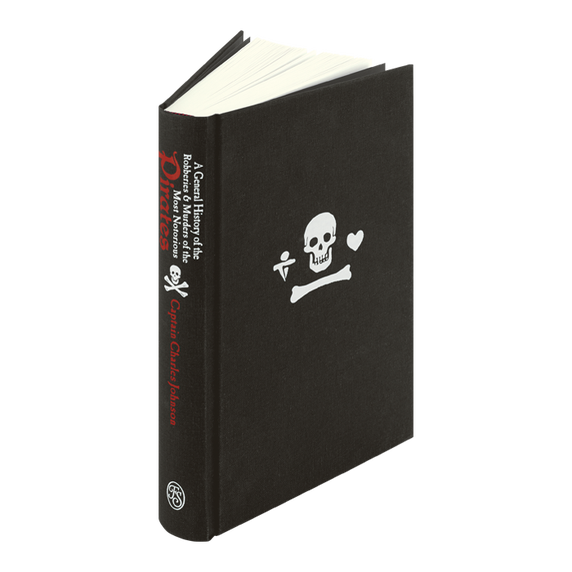
The bloodthirsty biographies of the world’s most infamous pirates are reproduced in this Folio edition of Captain Charles Johnson’s renowned work, including original woodcut illustrations and a fascinating introduction by Margarette Lincoln.
Illustrated by Chris Wormell
Introduced by Richard Horton
Daniel Defoe’s A Journal of the Plague Year depicts London in a deadly pandemic. This Folio Society edition, with beautiful woodcuts by Chris Wormell, is introduced by editor-in-chief of The Lancet, Richard Horton.
Framed as an eyewitness account of the plague of 1665, A Journal of the Plague Year blurs the line between history and fiction. On its publication in 1722, Daniel Defoe’s terrifying portrayal of a London laid low by disease – based on real-life testimony and official records – was hailed as a faithful report. This Folio edition opens with a thought-provoking introduction by Richard Horton, editor-in-chief of The Lancet medical journal and a leading commentator on public health. He writes, ‘If you have endured the coronavirus pandemic of 2020, Defoe speaks to you directly’.
With two-colour printing throughout, this distinctive edition is illustrated by the distinguished printmaker and illustrator Chris Wormell. He has created a superb cover design of two skeletons, recalling a danse macabre, as well as exquisite woodcut motifs that punctuate the text.
‘What a desolate place the city was at that time… whole streets seemed to be emptied of their inhabitants’
Three-quarter bound in blocked cloth with a printed and blocked paper front board
Set in Caslon
264 pages
Illustrated title-page plus 9 integrated woodcut motifs
1 map
Printed black & red throughout
Blocked slipcase
9½″ x 6¼″
Although it chronicled an epidemic of the previous century, A Journal of the Plague Year was written with an eye on contemporary events. In 1720, an outbreak in Marseille had claimed 100,000 lives, and Defoe, like many others, was afraid that the plague would once again make landfall in England. Those fears echo through the centuries to chill any modern reader dipping into Dafoe's vivid narrative with its unrelenting detail. The narrator, identified only as H.F., takes the reader on a nightmarish journey around the near-deserted streets, quarantined houses and overflowing plague pits of the stricken city. This Folio edition includes a reproduction of Wenceslaus Hollar’s famous map of London before the Great Fire of 1666, helping the reader to connect the places mentioned to many that still exist in the modern city.
‘Part adventure story, part social commentary, part survivalist instruction manual... A wonderfully vivid account of a city under siege from disease.’
- Financial Times
As the plague spreads, H.F. – based on Defoe’s uncle, a London saddler – chooses not to join the masses fleeing the city. He painstakingly records the ‘Bill of Mortality’ in each parish, unsparingly describing the human suffering and grief behind the figures. We learn of screams from houses sealed with the dreaded red cross, vain attempts of the authorities to contain the outbreak, and infected corpses left unburied as the pestilence nears its peak. H.F. is sympathetic to the plight of the poor and desperate, saving his contempt for the ‘quacks and mountebanks’ who peddle false cures; but the book is not without hope. Even as H.F. laments the destruction of London, he wishes that deliverance from the outbreak might yet help ‘remove the animosities among us’.
Born in London in 1660, Daniel Foe changed his surname to Defoe when he began to establish his trading businesses in the capital. Defoe lived through a fascinating and horrifying period in English history, surviving both the Great Plague of London in 1665 and the Great Fire of London the following year. In between working as a merchant, Defoe was a prodigious writer of political and social pamphlets and periodicals. He turned to novel writing late in life and his first published book, Robinson Crusoe (1719), is by far his best-known. His penchant for the adventure genre continued with Captain Singleton (1720), Memoirs of a Cavalier (1720), while A Journal of the Plague Year (1722) presents an eyewitness account of the Great Plague. Defoe was often in debt and spent time in debtors’ prison. He died in 1731 and is buried in Islington, London.
Chris Wormell was born in Lincolnshire in 1955. He has no formal artistic training and was a postman and factory worker before he taught himself the art of woodcutting and began writing and illustrating children’s books. He has published 14 books and illustrated many more, and he was the recipient of the 2004 New York Times Book Review Best Illustrated Children’s Book Award for Teeth, Tails, and Tentacles. He is also well-known for his book cover designs and has created the artwork for H is for Hawk (2014) and Philip Pullman’s The Book of Dust (2017), among others. Besides books, Wormell has worked on commissions for companies including Marks & Spencer and The Royal Opera House.
Richard Horton is editor-in-chief of the medical journal The Lancet. Born in 1961, Horton attended Bristol Grammar School before going on to study medicine at the University of Birmingham. He practised medicine at the Royal Free Hospital in London, and has since worked as a medical writer for The Observer and The Times Literary Supplement, as well as writing reports, papers and a book. As a medical expert, his opinion has been sought throughout the Covid-19 pandemic, and Horton has appeared on Question Time as an expert on the subject, as well as in newspaper and journal interviews. Horton is an honorary professor at the London School of Hygiene and Tropical Medicine, University College London and the University of Oslo.
